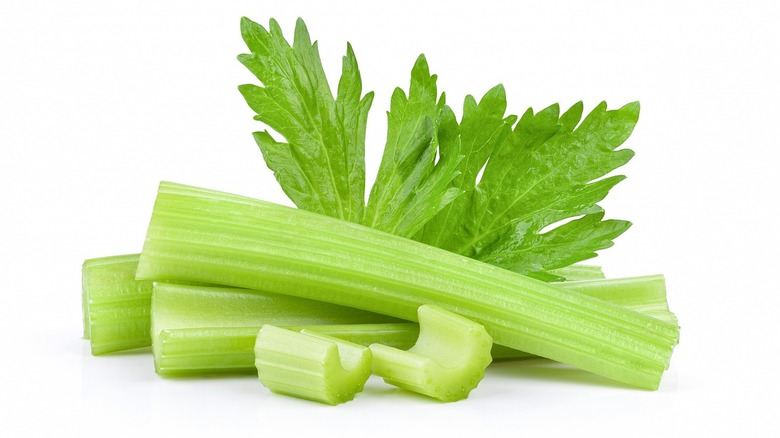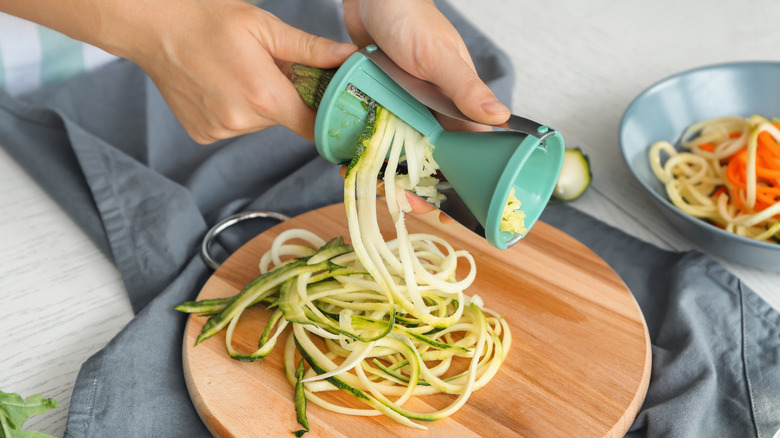Don't Ever Put Celery In Your Spiralizer
It all started with the classic zoodle, zucchini made into noodles to substitute into your everyday pasta dish to make it a healthier option. It blew up from there and now you can use anything from beets to carrots and even cucumbers. The spiralizer has elevated food and taken on a whole new meaning since the uptick in its sales in 2019. You could use those zoodles to make any meal keto-friendly, and people really hopped on board, explains Food Network.
Now, spiralizing your vegetables is more than just substituting spaghetti for zucchini. You can spiralize almost any vegetable and add it to your salads, slaws, soups, and sides (via inspiralized). The spiralizer is so much more than a zoodler now, and once you know how to use it, it can become a staple tool in your kitchen. While a spiralizer may seem like a simple tool, it's important to know what kind of food you can put in the machine in order to get those yummy veggie noodles you're looking for.
The shape doesn't work
Unfortunately, not all vegetables will spiral or fit the way you want them to. One example of this is celery. While celery sounds like the perfect healthy vegetable to spiralize and add to that crunch summer salad you've been wanting to try, celery stalks are too narrow to grip safely while using a spiralizer, explains AllRecipes.
It's good to keep in mind that the best vegetable to use on a spiralizer is something firm and wide. Something you know will produce well-formed spirals while also providing you with enough pieces to use in your recipe. Root vegetables are always a good place to start, just remember to use ones that don't hold too much water and have enough circumference to hold onto, notes BBC Good Food. While there are many ways to use celery, noodling cannot be one. While it gives you the firm and long aspect you're looking for in spiralizing, the thinness of the stalk isn't good enough and you could hurt yourself — you may just have to stick to regular old chopping for that one.

